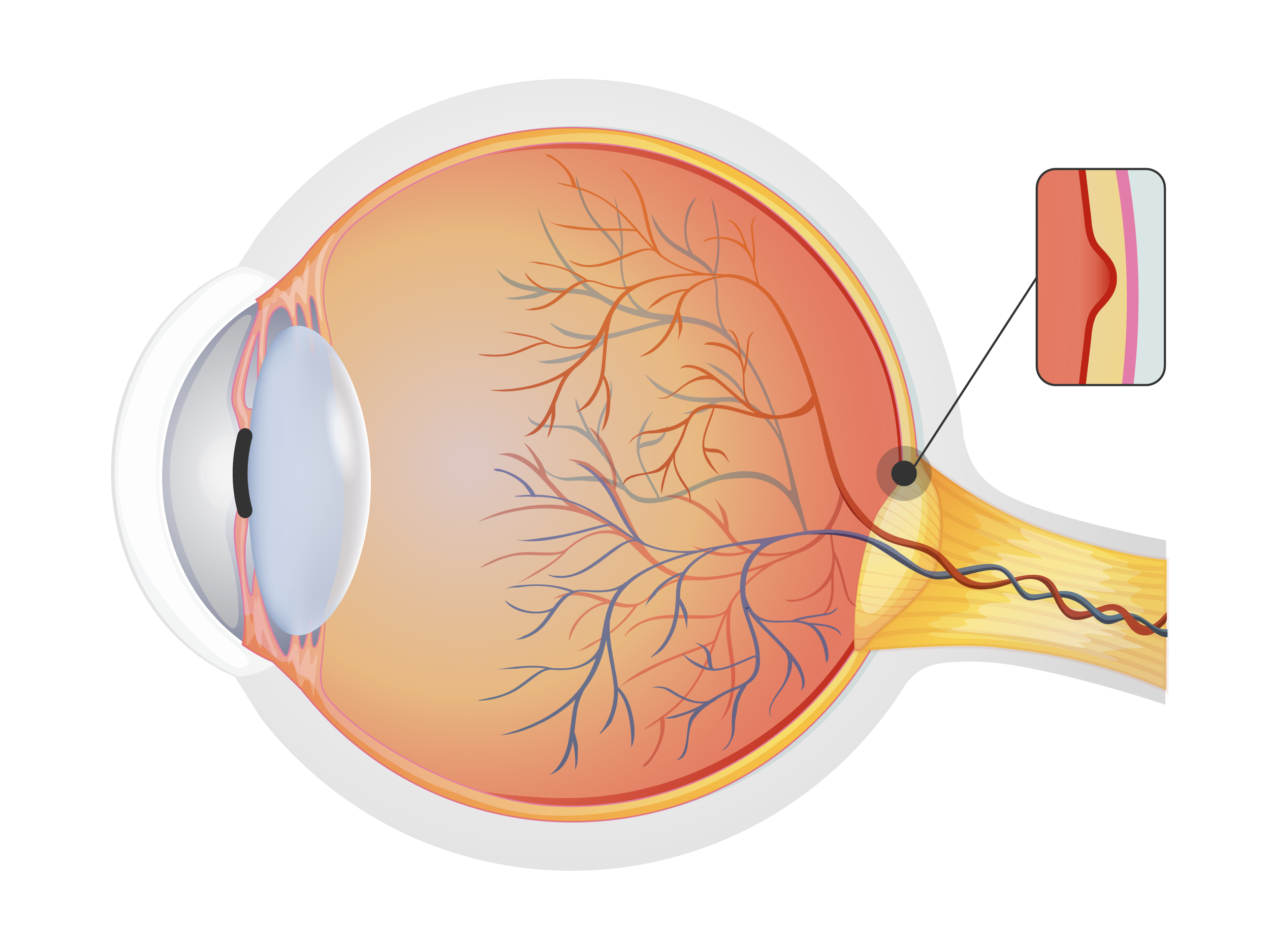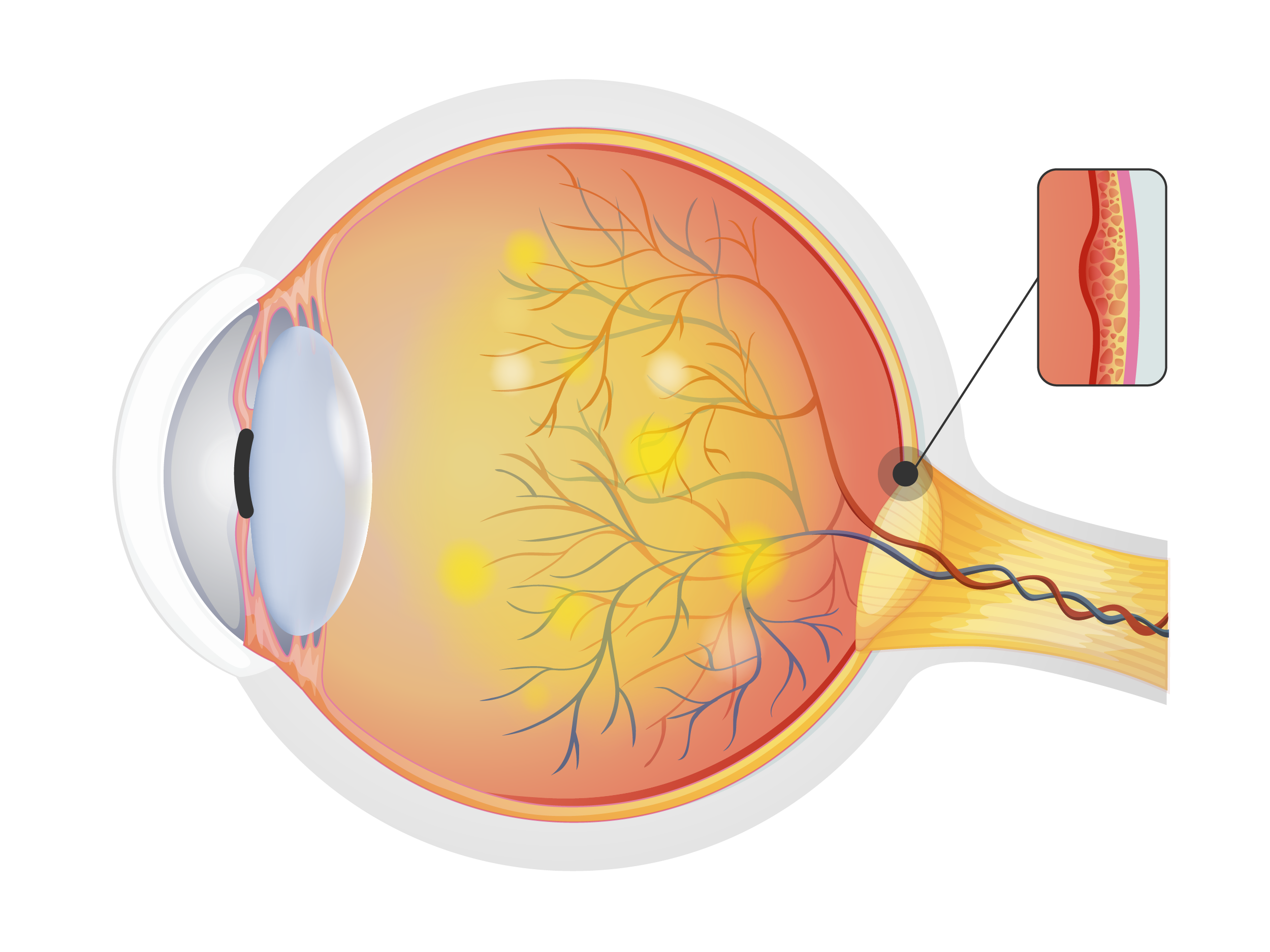Ophthalmological diseases
Here you can discover the most important eye diseases and we will help you to recognise their symptoms and tell you how each condition is treated.
Diabetic Macular Edema
What is DME?
Diabetic macular oedema (DME) is an ophthalmological complication characterised by inflammation and fluid accumulation in the macula, which is the part of the eye responsible for central vision. The high concentration of glucose in the blood of diabetic patients leads to leakage of blood and fat, which end up damaging the macula.
The most frequent type of macular oedema is that associated with diabetic retinopathy, although there are various possible causes of macular oedema, such as venous occlusion or following cataract surgery.
There are numerous risk factors associated with DME:
- Hyperglycaemia
- Hypertension
- Dyslipidaemia (changes in blood lipid levels)
- Cardiovascular diseases
- Smoking
- Anaemia
- Sleep apnoea
- Kidney disease
- Diabetic neuropathy

Healthy eye

Diabetic Macular Edema
Symptoms
During early stages of the disease, few symptoms are associated with DME. However, some of the most common symptoms in patients with DME include:
- Loss of vision, especially central vision
- Blurred vision, distorted perception of objects and problems distinguishing details
- Loss of perception of colour tone and brightness
- Appearance of dark spots or blind spots
- Perception of wavy objects or lines
Treatment
There are various options for treating macular oedema, depending on the patient, the cause of the oedema and its severity. It is essential to choose the optimum treatment on an individual basis.
In some cases, the use of anti-inflammatory eye drops may be sufficient. Another method of treatment consists of injecting drugs into the periocular area (around the eye globe) and intraocularly (injecting the drug into the eye). The drugs act locally on the macula to reduce the inflammation and fluid extravasation. Laser photocoagulation is also useful for treating some cases of macular oedema by “sealing” the points from which fluid leaks. Finally, in some cases, it may be necessary to perform vitreoretinal surgery to treat tractional macular oedema, in which there is tissue on the surface of the retina that is responsible for the changes in the macula.

